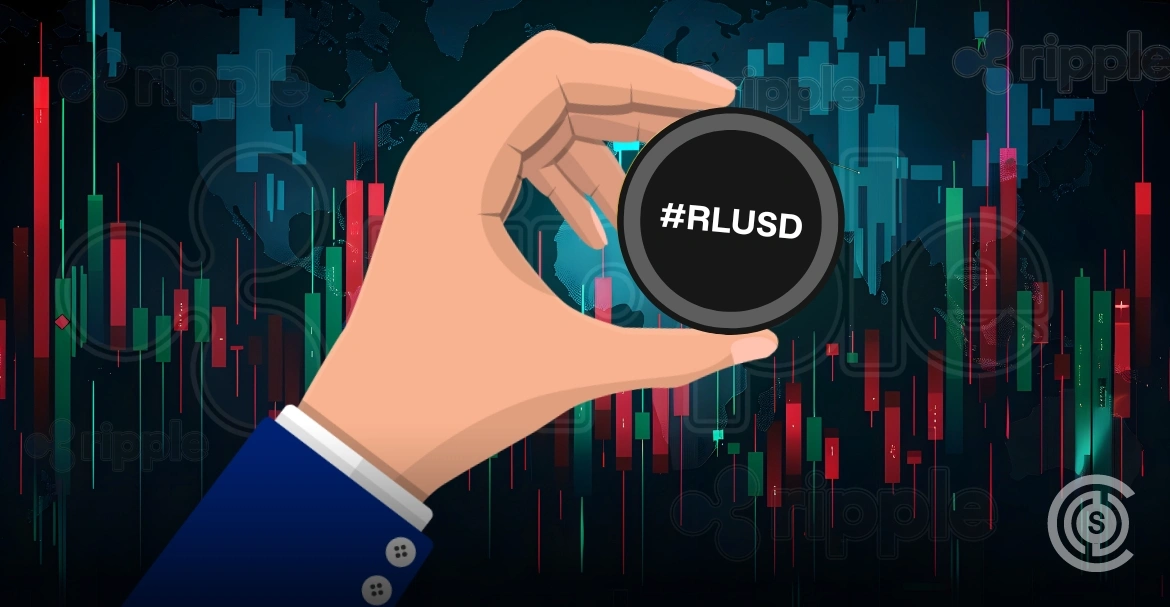Ripple’s RLUSD Hits $1B on Ethereum After Abu Dhabi Win

Ripple’s stablecoin, RLUSD, has made a significant impact in the cryptocurrency market, surpassing the $1 billion milestone on the Ethereum network. With over 1.02 billion tokens minted and active, RLUSD’s market capitalization stands at an impressive $1.261 billion. This achievement is a testament to the growing adoption and trust in the stablecoin among users, particularly on the Ethereum blockchain.
This development is particularly noteworthy considering its timing. The surge in adoption coincides with RLUSD’s recent regulatory approval in Abu Dhabi, where it has been designated as a fiat-referenced token and lending collateral.
RLUSD Exhibits Massive Surge in Adoption on Ethereum
The latest reports indicate a massive surge in the adoption and usage of Ripple’s RLUSD stablecoin, especially on the Ethereum network. According to data from DefiLlama, RLUSD’s circulating supply now stands at 1.26 billion, translating to a market cap of $1.26 billion.

This milestone significantly showcases the widespread adoption of RLUSD, with over 1.02 billion tokens actively circulating on Ethereum, reflecting growing demand. It also underscores the token’s increasing popularity and acceptance within the community, further solidifying its position as a trusted digital asset.
The remarkable presence of over 1.26 billion RLUSD on Ethereum underscores the token’s growing liquidity and relevance, particularly in a market dominated by stablecoin giants like Tether’s USDT and Circle’s USDC. This suggests that users are increasingly comfortable and confident using RLUSD for payment transactions.
Stablecoin Activity on the Rise: Token Terminal
In a recent post on the X platform, on-chain blockchain data platform Token Terminal unveiled the substantial hike in the transaction volume of RLUSD on Ethereum. The reported volume above the staggering $1 billion indicates a notable increase from the $66 million volume at the beginning of 2025. It is observed that the chart shows an upward trend throughout the first half of the year, followed by a noticeable shift to a higher baseline in the second half. Additionally, recent weeks have seen a clustering of activity around an elevated floor, rather than spiking and reverting.
Weekly RLUSD transfer volume averages $1B 👇
🔹Weekly RLUSD transfer volume on @ethereum now averages around $1B, up from $66M at the start of the year. The chart shows an upward trend through H1, then a clear shift to a higher baseline in H2. Recent weeks cluster around an… pic.twitter.com/5IdcJDDGdp
— Token Terminal 📊 (@tokenterminal) November 28, 2025
According to the analysis, a rising baseline typically signifies a shift from initial distribution-phase activity to more regular and recurring usage. It is noted that early-stage stablecoin transfers often reflect initial distribution, with issuers moving supply to exchanges or counterparties. The clustering around an elevated floor suggests that activity is persisting beyond isolated events.
Furthermore, the chart indicates increasing utilisation, rather than just increasing issuance, consistent with RLUSD being used in the ongoing flows rather than sitting idle after minting.
RLUSD Gains Regulatory Clarity in Abu Dhabi as a Fiat-Referenced Token
Significantly, this major development comes on the heels of RLUSD’s crucial achievement in Abu Dhabi. As per reports, Abu Dhabi Global Market’s (ADGM) Financial Services Regulatory Authority (FSRA).
This approval allows Authorized Persons in ADGM to utilise RLUSD for regulated activities, provided they meet the FSRA’s governance, risk, and compliance requirements. The decision strengthened Ripple’s presence in a leading digital asset hub, validating RLUSD as a trusted and compliant settlement asset in the Middle East.
This recognition is notable given ADGM’s progressive approach towards digital asset regulation, providing Ripple with a regulated pathway for enterprise adoption in payments, treasury operations, and digital asset settlement. The approval follows recent regional endorsements, highlighting the growing acceptance of RLUSD among Middle Eastern regulators and financial institutions.







